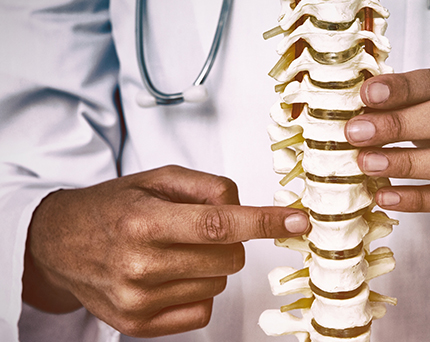Back pain is something many people experience in their life, but not all back pain is equal. We sat down with one of Azalea Orthopedics’ Spine Surgeons, Dr. Michael Russell, for his insight on Disc Herniations.
What is a Herniated Disc– A herniated disc is the extrusion of material that usually sits between the vertebra as the cushion. The annulus of the disc tears sort of like in a tire, where there is a “bleb”. That portion of the disc that is herniated is the consistency of “crab meat”, typically. The herniation can put pressure on the nerves that exit the spinal canal and go to the extremities.
Symptoms– The symptoms of a herniated disc depend on which portion of the spine it arises from. In the neck a “cervical” disc herniation can cause neck pain with associated shoulder, arm or hand pain/ numbness/ or weakness. In the lower back a “lumbar” disc herniation can cause back pain with associated leg or foot pain/ numbness/ weakness.
People who are at risk– Everyone is at risk for a herniated disc, it can happen at any age, any gender, and any occupation. It can be associated with lifting and twisting at the same time. So occupations that do a lot of lifting, as well as some exercise programs can cause the herniation because of excess stress on the disc. However, many times there is no specific “cause”.
Treatment Options– Depending on the size of the herniation and the severity of the symptoms, treatment options include: 1. Observation/ rest/ steroids. 2. Injections 3. Surgical intervention.
Surgery Information (healing time, inpatient or outpatient, success rate, etc.)
The surgery for most simple lumbar herniations is a very minor “day surgery” procedure called a microdiscectomy. This is where we perform the discectomy with the use of a “microscope” and many times through a tube, allowing minimal muscle damage. The success rate is high above 95% and the time back to normal activities is short, typically a few weeks. For cervical disc herniations, again a small surgery but most cases require a fusion because the herniation has to be fixed from the anterior portion of the disc. These usually require an overnight stay at the hospital, a brace for 1-4 weeks depending on the number of fused segments and the quality of the bone. Most activities are resumed within the one – four week time period.
Azalea Orthopedics is East Texas’ leading orthopedic and spine clinic. We have the specialists to treat all types of injuries and conditions. If you are in pain and searching for options, #DemandAzalea! We are here and on call 24 hours a day, seven days a week. Click here or call 903-939-7500 to schedule an appointment with a specialist.





